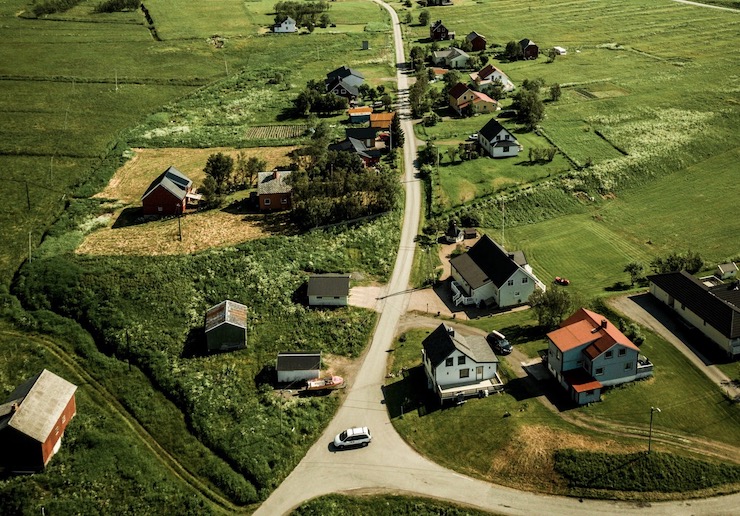The Final Frontier of Drone Use May Soon Become a Reality: Flying Beyond Visual Line of Sight

Drones have become the next big thing in the technology sector. They are being used in countless commercial enterprises. Drones have shown particular promise in the fields of agriculture, inspections, and deliveries. While it seems that the possibilities drones present are boundless, they are still being greatly held back by one factor, the ability to fly Beyond Visual Line Of Sight (BVLOS). When it comes to the development of software and hardware for drones, BVLOS is the final frontier. Earlier this month the Federal Aviation Administration (FAA) announced that one of their UAV (unmanned aerial vehicle) test sites would begin testing BVLOS in earnest.
But why is it so important for drones to be able to be flown BVLOS? Currently, all drone operators under the Part 107 license must fly their drones within VLOS (visual line of sight), or in some cases EVLOS (extended visual line of sight). On rare occasions, a special BVLOS waiver can be granted by the FAA. This means that a drone can be flown through cloudy or foggy skies as long as it can be seen for the majority of the time by the pilot, but the drone can not be sent beyond the line of the pilot’s eyesight. This also limits the time of day during which drones can be flown to daylight hours. For many commercial ventures, this limits how drones can be used.
For drones that are being used by agriculturists with vast fields, being able to keep a drone within line of sight is not logical. While drones have gone a long way in helping farmers and ranchers monitor their lands, the operator still needs to stop to relocate the drone to cover all of their land. The same principle applies to say a utility company using a drone to inspect miles and miles of powerlines. One of the biggest draws to using a drone in these fields is that they save time. And while they have been tremendously cutting down hours of inspection time, with BVLOS these times could become even shorter. When it comes to being able to use drones to deliver packages, being able to fly BVLOS is simply the missing link in making it a productive undertaking.
By 2016, the FAA had designated 7 UAS test sites throughout the United States of America to meet the FAA Modernization and Reform Act of 2012 that called for a way of researching drone capabilities for safe use in US airspace. These UAS test sites are different than the 10 sites dedicated to the FAA’s Unmanned Aircraft Systems Integration Pilot Program (UASIPP) established in 2017, though they do overlap some. The difference is that the UAS test sites are the initial testing sites while the UASIPP then takes these tests and has them applied in practical situations. The 7 dedicated FAA UAS test sites are Griffiss International Airport, NY, New Mexico State University, NM, North Dakota Department of Commerce, ND, State of Nevada, NV, Texas A&M University Corpus Christi, TX, University of Alaska Fairbanks, AK, and Virginia Polytechnic Institute & State University, VA.
The FAA began researching BVLOS possibilities at the University of Alaska Fairbanks, AK back in 2014. However, it wasn’t until recently that true BVLOS drone operations were developed. On September 10, 2020, the FAA announced that the North Dakota Department of Commerce, ND Northern Plains UAS Test Site (NPUASTS) would become the primary location for BVLOS tests in collaboration with Volansi UAVs. Helping build the infrastructure needed for these tests will be two aviation companies, L3Harris Technologies, and Thales USA.
L3 Harris and Thales will build the framework for how to safely and effectively enable BVLOS flight plans to be tested in a range of scenarios including over military, commercial, and gas and oil sites. The drones being tested will be Volansi’s VOLY C10 a fixed bi-winged UAS. The Voly C10 is 6.9ft long with a 9.6ft wingspan. It has a flight range between 40-50miles at top speeds of 60mph for a 45-60minute flight time. It can support an impressive payload of up to 10lbs. All of these details situate Volani’s drone as an ideal UAS for BVLOS capabilities including Detect and Avoid and Command Control technologies.
Testing at NPUASTS has already begun it’s initial stages. Tests are being conducted to see how the drone works under different forces, as well as the infrastructure that will control the drone without a pilot’s input. “The state of North Dakota’s Statewide BVLOS Network is truly the first of its kind,” said Todd Donovan, vice president of air traffic management at Thales USA. “This robust network, that safely and securely integrates UAS into the national airspace, will serve as an enviable model and be the catalyst for broader commercial UAS operations for years to come as it relies on a complete solution that addresses the FAA’s safety risk management process.” The data collected through these tests could prove to be the missing link that will catapult drones to the next level.
|